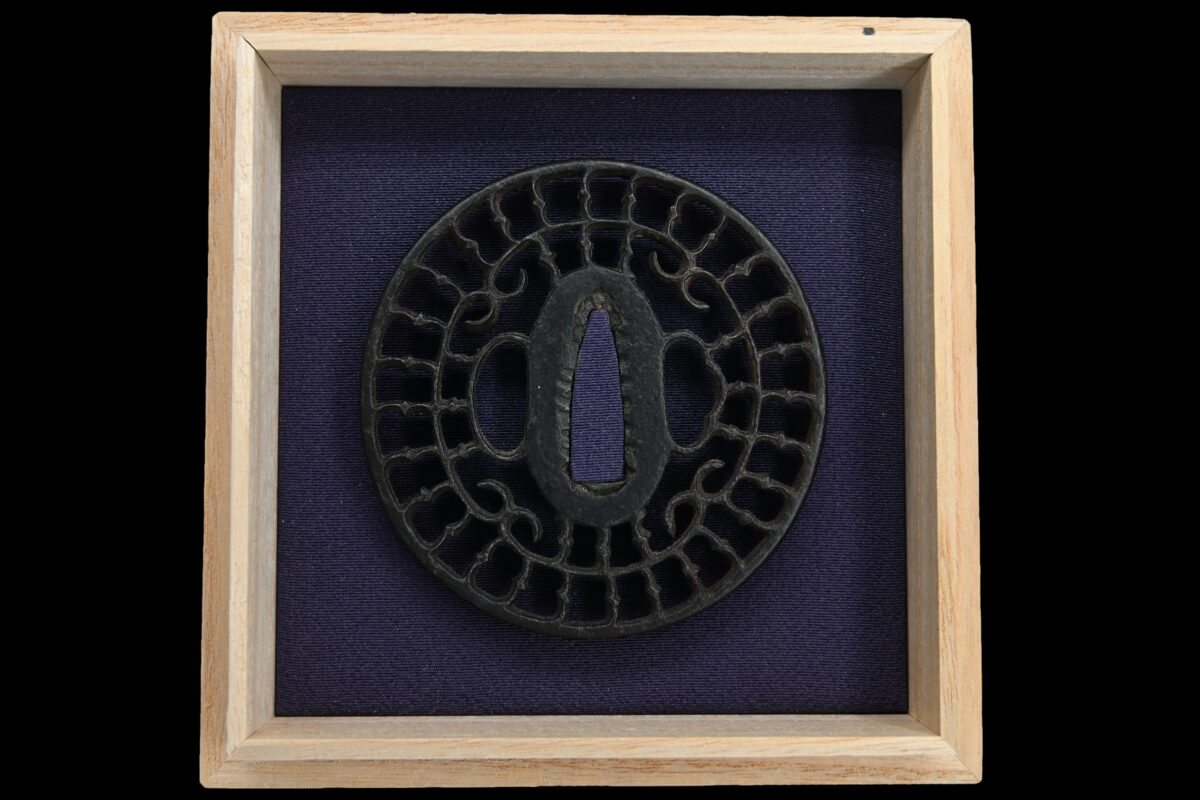Tsuba: Dragon
Signature/mei: Ichiryu Tomoyoshi
Material: iron
Era/jidai: Edo
Dimension(h/w/d): 69 x 72 x 4.9 mm
Certificate: NBTHK Hozon (2020)
Custom made box
Price: on request
Exceptionally well-cut tsuba with Tomoyoshi’s famous dragon design.





Tsuba: Kiri mon
Signature/mei: mumei
Material: shakudo-nanako, gold
Era/jidai: Edo
Dimension(h/w/d): 66.5.0 x 61.0 x 4.65 mm
Certificate: NBTHK Hozon (2007 – Yoshioka)
Custom made box
Price: €3125 / $3750 / ¥500000
Fine kiri-mon tsuba on shakudo-nanko. The kiri-mon overlay covers the edge of the tsuba. A small and delicate piece for a person of higher rank. Attributed to Yoshioka according to the NBTHK Hozon certificate.





Tsuba: Dragons on shakudo-nanako
Signature/mei: mumei
Material: shakudo, gold
Era/jidai: Edo
Dimension(h/w/d-plate/d-dragon): 75.0 x 70.0 x 3.8 x 8.7 mm
Certificate: NBTHK Hozon (2016 – Kyo Kinko)
Box included
Price: €2200 / $2600 / ¥350000
If you like dragons on your tsuba and love shakudo-nanako, this is the tsuba for you. Attributed to Kyo Kinko by NBTHK Hozon certification. Truly magnificent, the way the two dragons form the rim of the tsuba.





Tsuba: Wheel design by Myochin
Signature/mei: mumei
Material: iron
Era/jidai: Edo
Dimension(h/w/d): 72.0 x 66.0 x 4.6 mm
Certificate: NBTHK Hozon (2023- Mumei Myochin)
Box included
Price: €1200 / $1400 / ¥200000
A robust and powerfully crafted tsuba with a wheel motif. This tsuba conveys the impression of the powerful forging skills of a Myochin master. The Myochin were primarily known for their armor production.




Tsuba: Kamiyoshi – Cherry blossom and warabite
Signature/mei: mumei
Material: iron
Era/jidai: Edo
Dimension(h/w/d): 73.0 x 69.8 x 4.9 (5.4) mm
Certificate: NBTHK Hozon (1992 – Kamiyoshi)
High quality custom made kiri box with cushion
Price: €2190 / $2290 / ¥350000
Kamiyoshi tsuba with cherry blossom and warabite design, forged from fantastic iron.
A very similar tsuba of the first generation Kamiyoshi is published in Ito Mitsuro’s book “Works of Hayashi & Kamiyoshi” No. 176, but has a few less details than the work shown here. This tsuba was probably made by the second generation Kamiyoshi Fukanobu.
It already has an NBTHK Hozon paper and comes in a high quality custom made box.


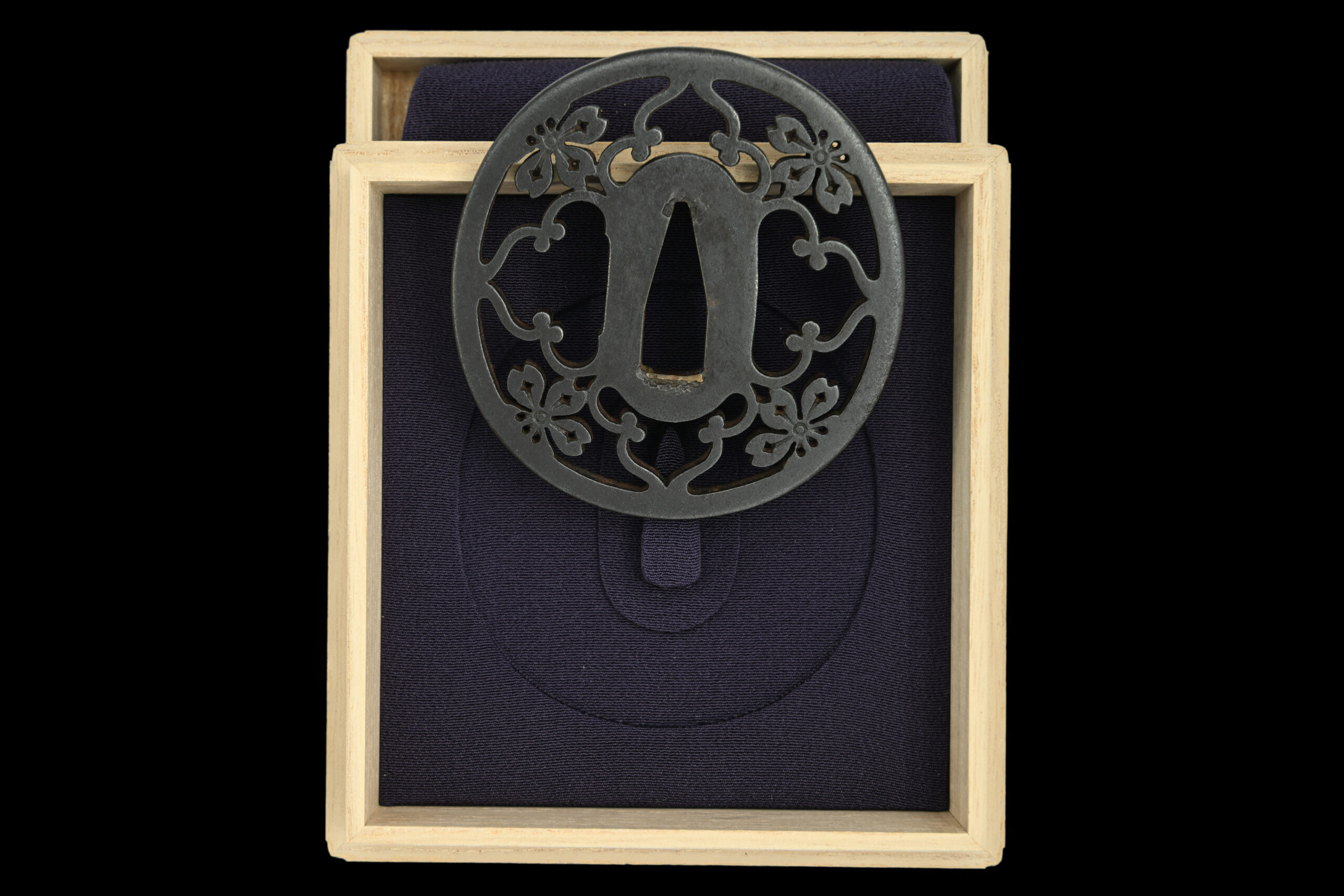
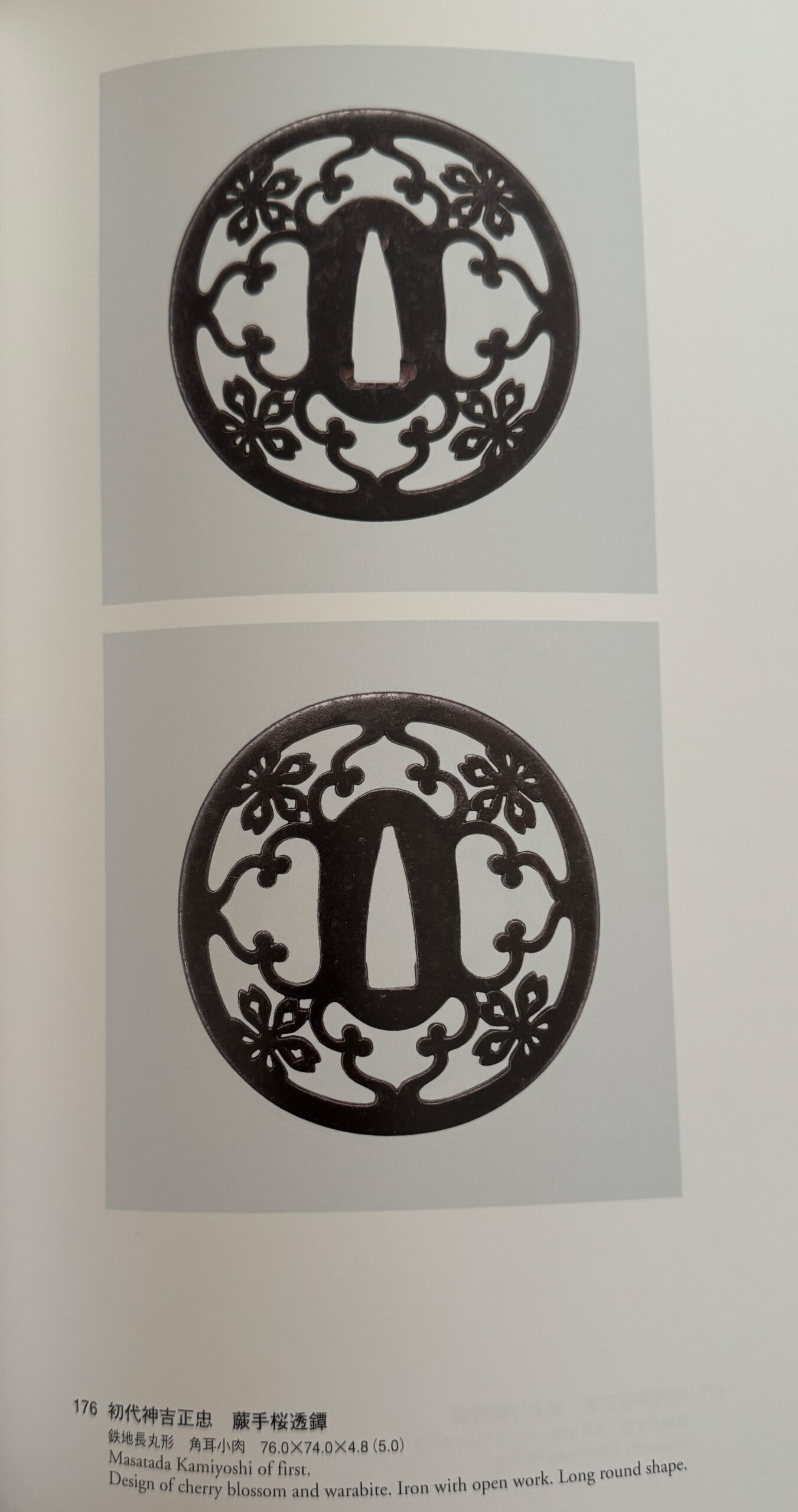
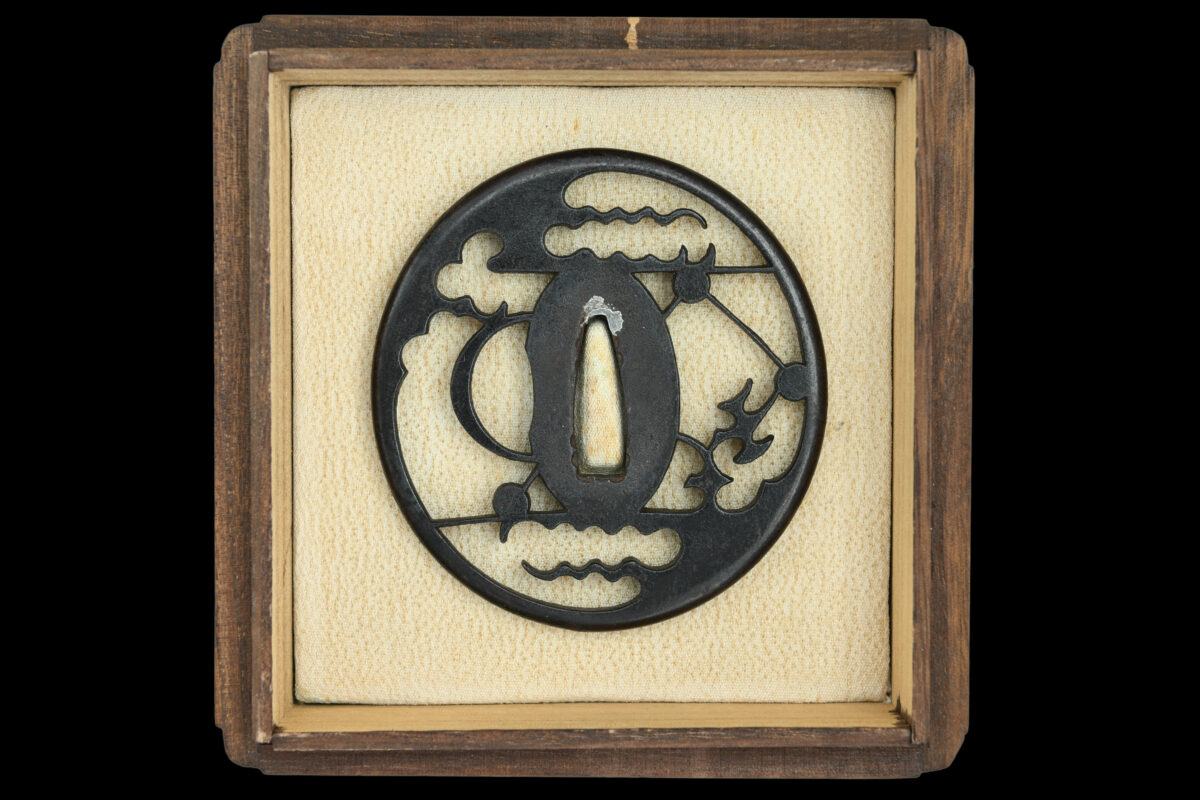
Tsuba: Crescent Moon
Signature/mei: mumei
Material: iron
Era/jidai: Edo
Dimension(h/w): 80 x 77 mm
Price: €1250/ $1350 / ¥200000
This tsuba comes from the collection of the famous kodogu collector Kokobu Kenichi and is attributed to Echizen Akao. The design shows the crescent moon with stars and a flying bird, probably a swallow, while everything is surrounded by clouds. The design looks surprisingly modern with the curved lines as clouds, while the moon forms the hitsuana.

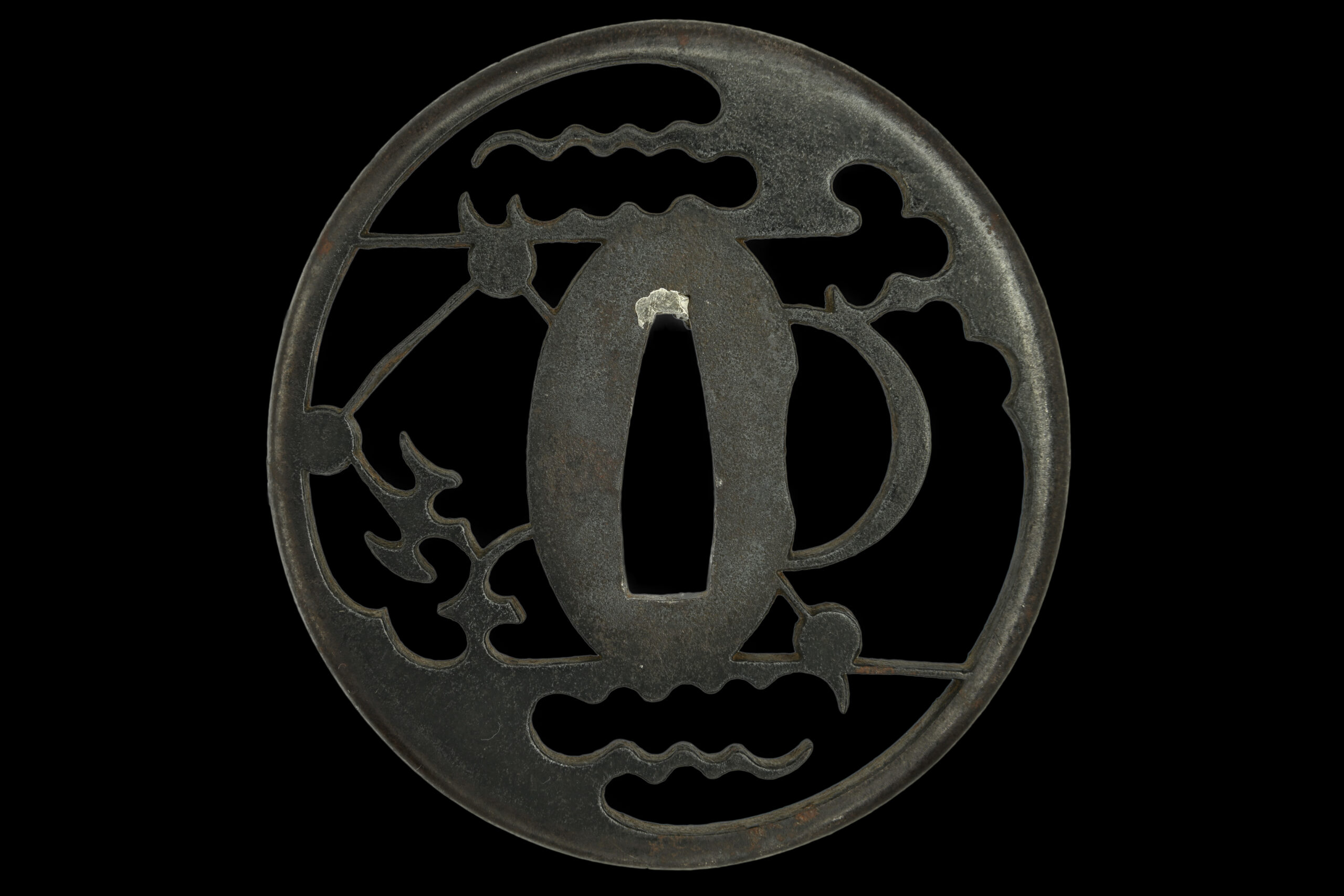
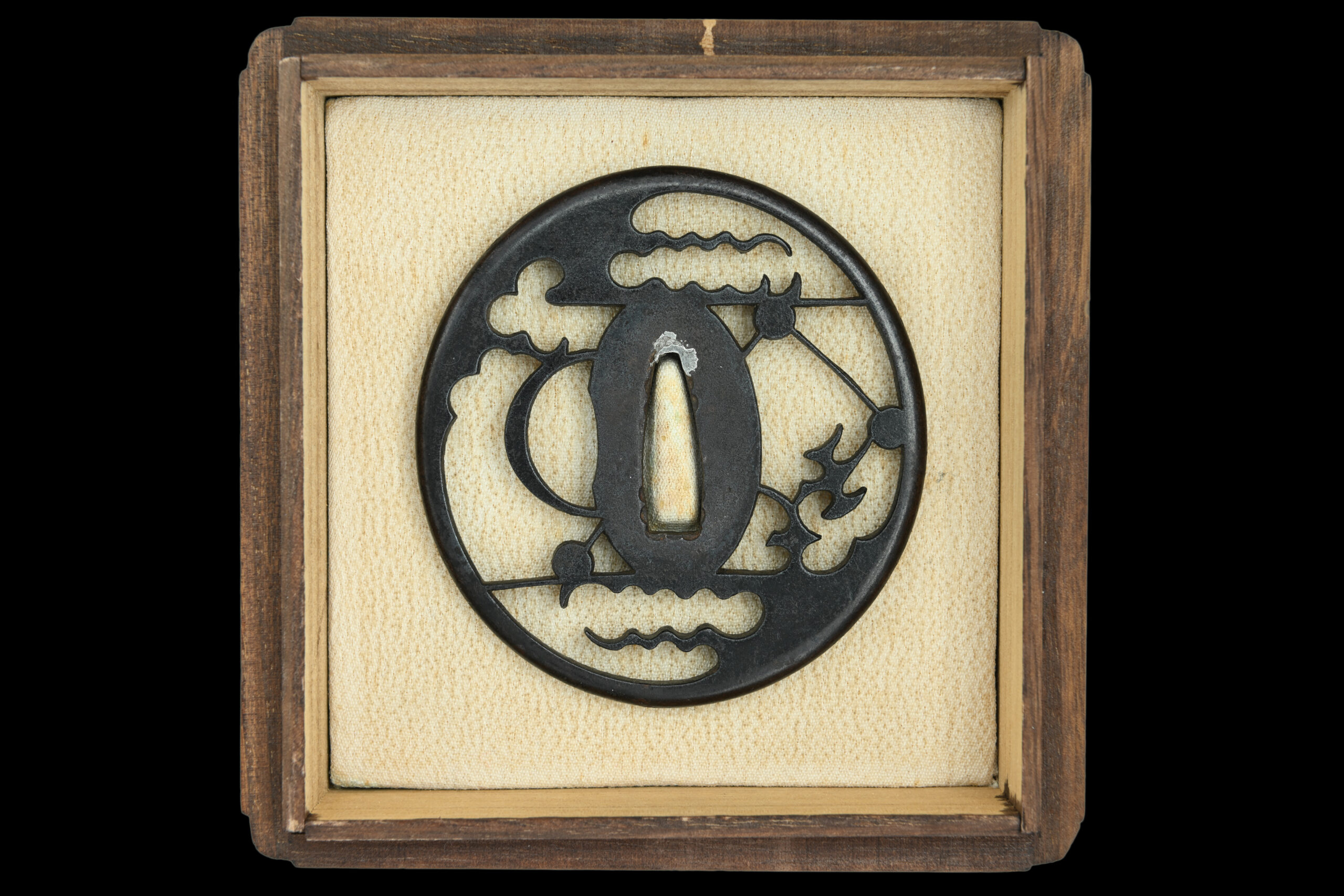
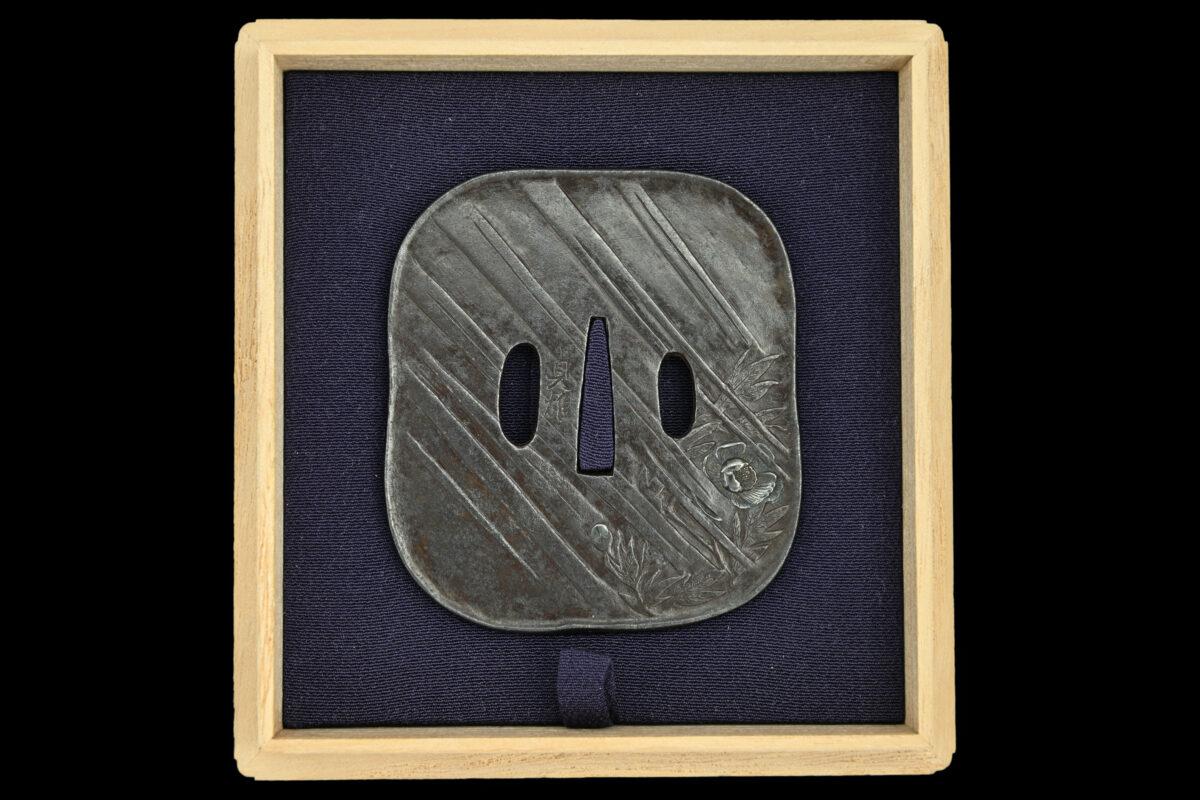
Tsuba: Peony
Signature/mei: Sadao
Material: iron, shakudo
Era/jidai: 19th/20th century
Dimension(h/w): 66 x 57 mm
Certificate: NBTHK Hozon (2019)
Price: on request
Carved on the iron base we see a rain shower (shigure) and a peony, with the flower of the peony inlaid in shakudo. The tsuba is signed Sadao and on the ura side we find his kao very cleanly and finely carved. Since Sadao was a student of Kano Natsuo, we can clearly see the influence of his master, as the entire tsuba is reminiscent of a Natsuo design.

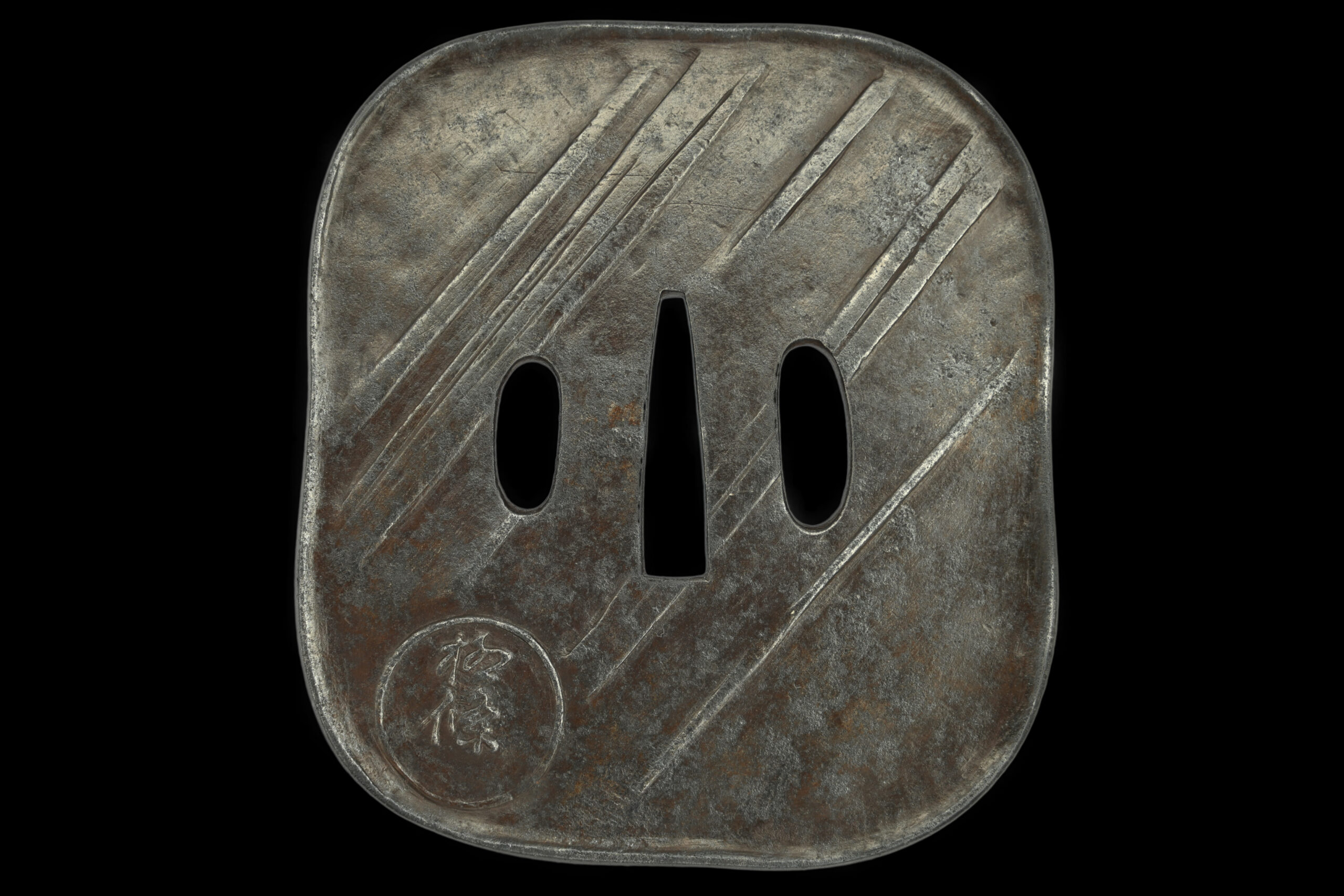
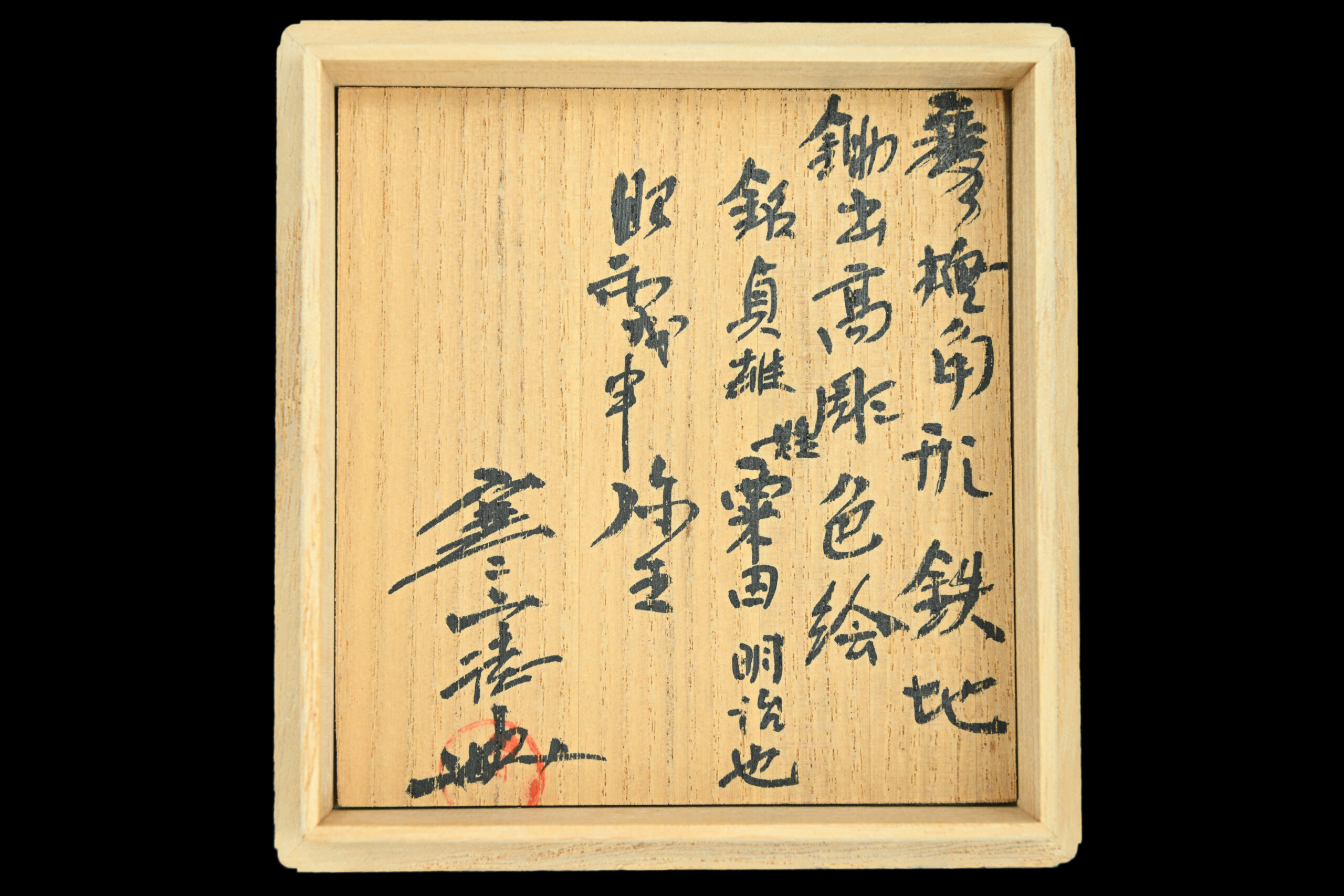
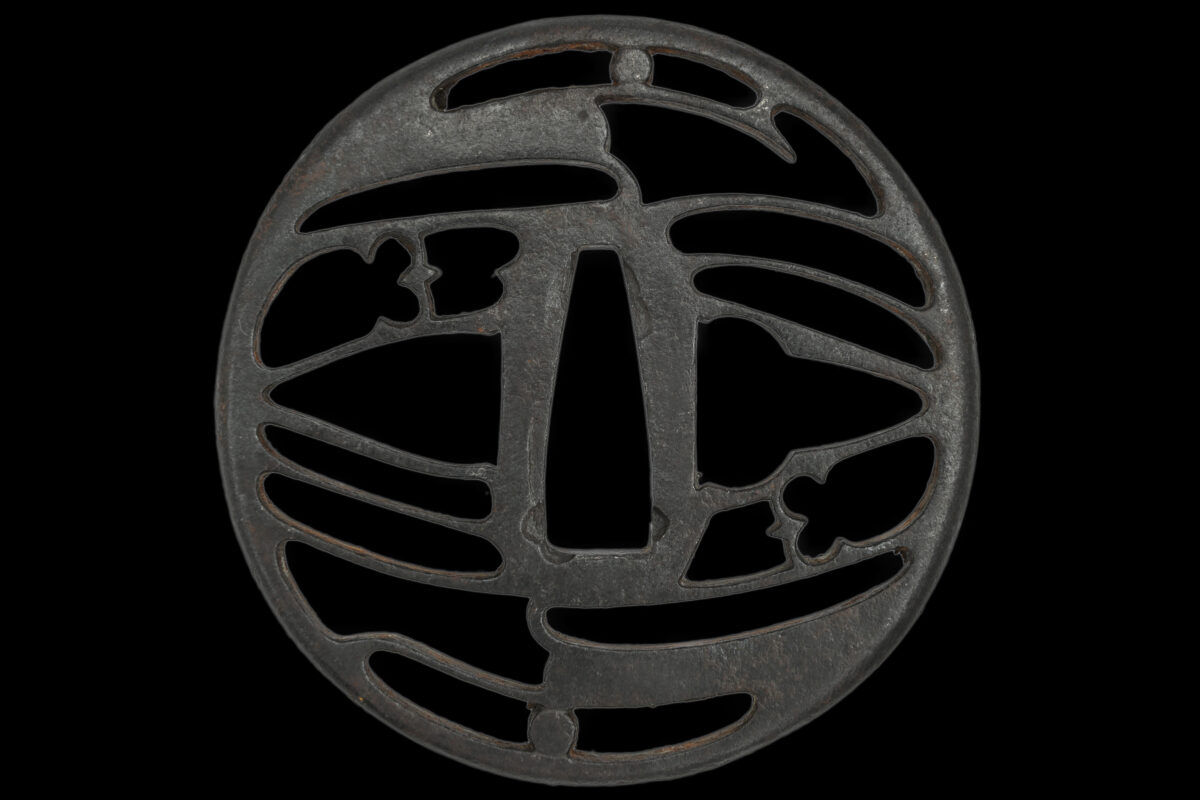
Tsuba: Akasaka – Design of musashino with karigane
Signature/mei: Unsigned
Material: Iron
Era/jidai: Edo
Dimension(h/w/d): 76.5 x 75.9 x 6.35 mm
Price: €990 / $1090 / ¥160000
Sukashi tsuba with the famous “Musashino” motif. A great battle was fought in the fields of Musashino (near Tokyo). Typically, this design only shows some blades of grass with raindrops or morning dew, suggesting the aftermath of the great battle. In some more rustic or aggressive designs, even bones or skulls are shown.
On this Edo period tsuba, we also find drops of water on the grass and in addition, karigane flying over the field. A very nice interpretation of Musashino.
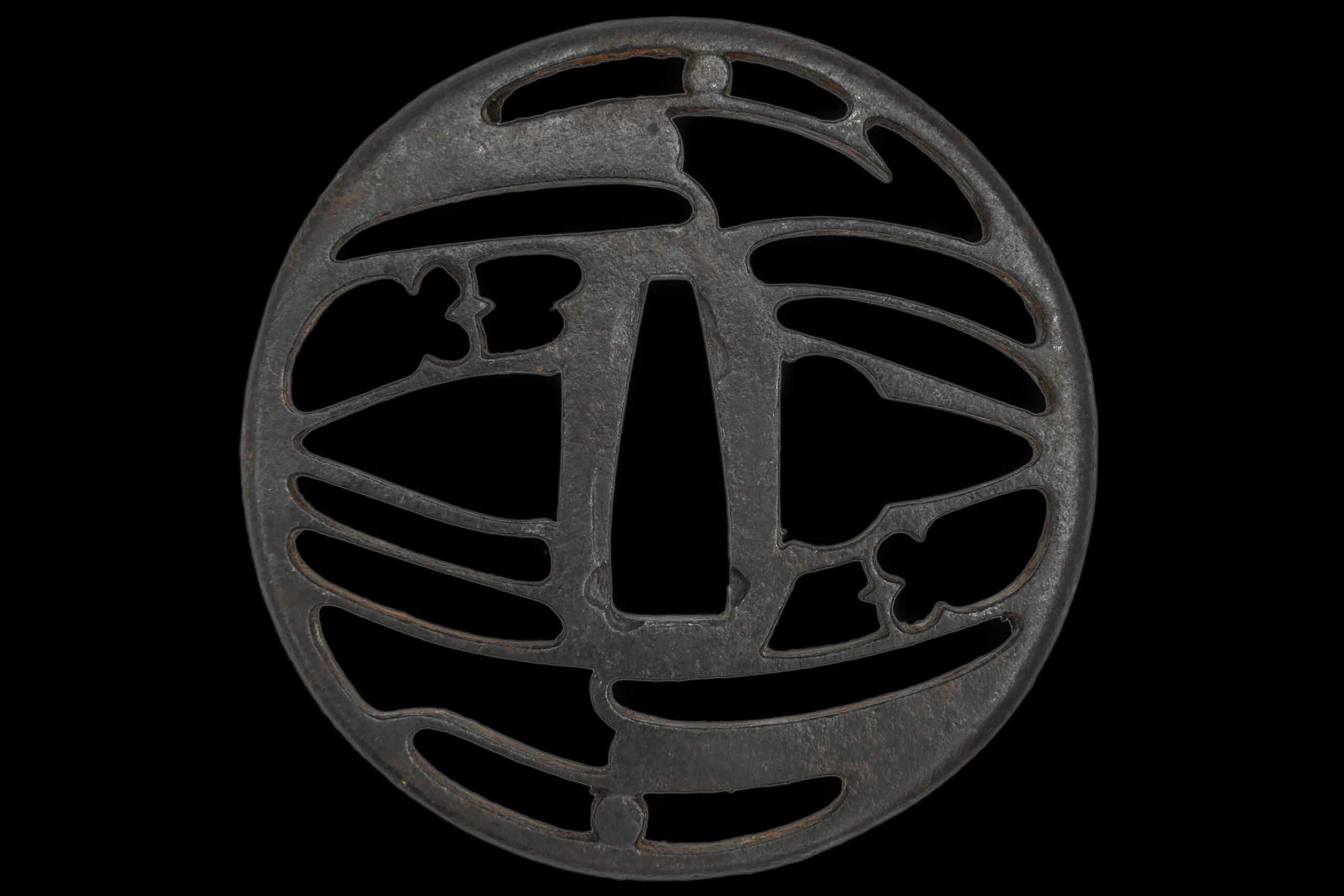


Tsuba: Eagle
Signature/mei: mumei
Material: iron, brass
Era/jidai: unknown
Dimension(h/w/d): 79 x 74 x 5 mm
Price: €1450 / $1750 / ¥250000
Tsuba with eagle motif, leaves, and ferns. The form of sumi-iri-kaka-gata is rarer and well executed. The eagle has a proud face and is superbly chiseled. However, it appears to be a more modern interpretation; although my initial classification was Edo-Higo.


